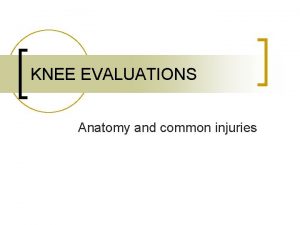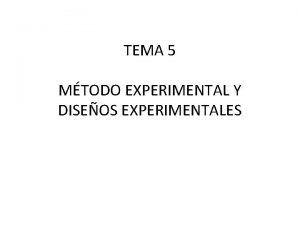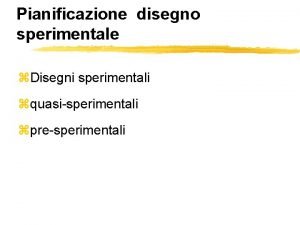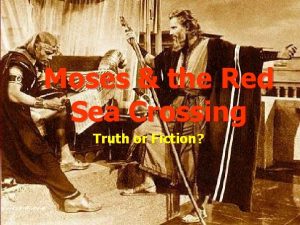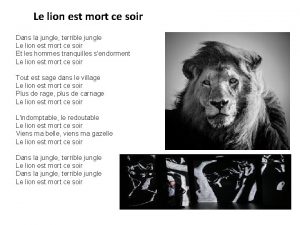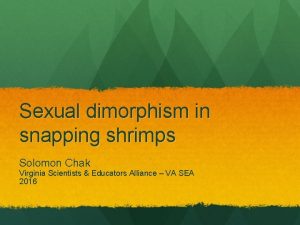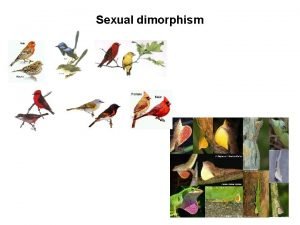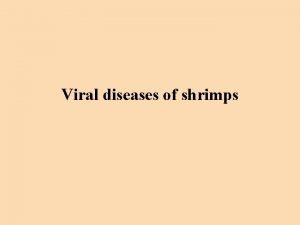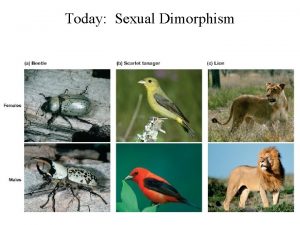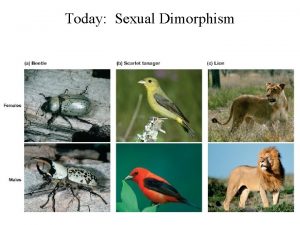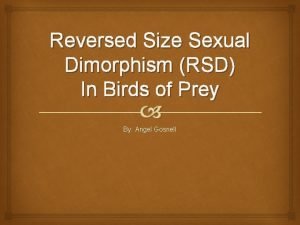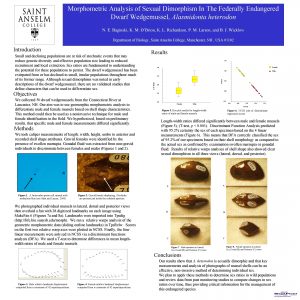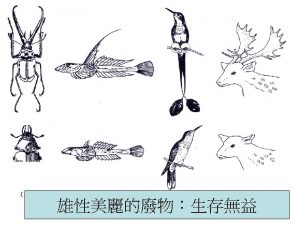Sexual dimorphism in snapping shrimps Solomon Chak Virginia















































- Slides: 47

Sexual dimorphism in snapping shrimps Solomon Chak Virginia Scientists & Educators Alliance – VA SEA 2016

I. Background

Fencing Whales Video Top: Darwin (1871) Descent of Man, public domain Bottom: Marrabbio 2, Wikimedia Commons Top : Chris. O at English Wikipedia Bottom: Hagerty Ryan, U. S. FWS , public domain

Sexual Dimorphism • The two sexes exhibit different secondary sexual characters (i. e. , beyond gonads/sexual organs) • Can include size, color, plumage, special structures, behavior, etc. • Usually, morphological traits related to competition or mate attraction are more pronounced in males • Why? • SEXUAL SELECTION Top : Chris. O at English Wikipedia Bottom: Hagerty Ryan, U. S. FWS , public domain

Natural selection is the differential survival and reproduction of individuals due to differences in phenotype (Zimmer & Emlen 2013) One of many mechanisms* of evolution * Other mechanisms of evolution are mutation, genetic drift, recombination & gene flow

Natural selection at work Ancestral population Variation in trait Extant population Differential reproduction Trait is heritable “Adapted” “Organisms better adapted to their environment would benefit from higher rates of survival than those less well equipped to do so. ” (Brennan 2010) LEARN MORE: The University of California Museum of Paleontology's Understanding Evolution (http: //evolution. berkeley. edu)

Sexual selection Evolution of “secondary” sexual characters Darwin observed that these characters did not appear to increase survival, and may be a result of competition between the same sex either for breeding opportunities or to attract the opposite sex Selection that “depends on the advantage which certain individuals have over others of the same sex and species solely in respect of reproduction. ” (Darwin, The Descent of Man and Selection in Relation to Sex) Trait usually involves some costs to produce, so only the sex that can benefit from it would have it

Males often carry the sexually selected trait Bateman’s Principle: variability in reproductive success is greater in males than in females At each reproductive cycle: 1. Male can mate multiply to increase reproductive success, because sperms are cheaper to make. Competition 10, 000 sperm 2. Female CANNOT mate multiply, because eggs are more expensive to make. 1 egg Choosiness Photo credit: Public domain

Sexual selection at work Ancestral population Extant population Variation in a heritable trait Sexual dimorphism Males with stronger trait increase reproductive success

Sexual selection & dimorphism In essence, males compete for females and selection favor traits in males that increase competitiveness Stalk-eyed f lies Frogs & Peacocks toads Elephant seals Photo credits: Hauke Koch, Wikipedia; Whiteghost. ink, Wikipedia; 2002 Jean-Marc Hero; Jan Roletto, public domain

Investigation: Snapping Shrimp Dimorphism Day 1 Photo credit: Encyclopedia of Life

Snapping shrimps Kingdom Animalia, Phylum Arthropoda, Subphylum Crustacea, Class Malacostraca, Order Decapoda, Family Alpheidae Weird Nature – BBC: snapping shrimps Powerful snapping claw=major chela vs. much smaller=minor chela The snapping claw is used for competition and as secondary sexual character in some species. Synalpheus bocas Photo credits: Journal of Crustacean Biology (16(3): 564 -573. 1996) by J. Emmett Duffy; S. bocas: Macdonald et al. 2009

Synalpheus: Sponge-dwelling snapping shrimps Hultgren KM, Duffy JE (2010) S. Chak Left: Synalpheus guarding a canal opening; Right: sponge canals Photo credit: S. Chak Bottom: The sponge Lissodendoryx colombiensis on coral rubble in Panama

Synalpheus social structures Pair-forming *Communal Eusocial In communal species, shrimps frequently encounter other potential mates in the same sponge, allowing for opportunity for competition among males and female mate choice.

II. Hypothesis & predictions

General hypothesis & specific predictions Hypothesis: Sexual selection is operating in snapping shrimp Synalpheus yano, a communal species. Q 1. i) What specific prediction(s) can you make from the hypothesis? In other words, what pattern in the data will support your hypothesis? ii) How would you test your prediction(s)? S. yano Photo credit: Rios & Duffy 2007 Zootaxa

General hypothesis & specific predictions Q 2. Figure 2 shows the relationship between carapace length and chela length in log-scales. i) How do you describe this pattern? Chela size increase with carapace size Mathematically according to: y = kxa or log y = a log x + log k

Why Allometry? Eva Rinaldi, flickr

Allometry A colony of shrimp includes individuals that are of different ages. As a shrimp grows larger, chela size increases with carapace length; this is called allometric scaling. This means that we cannot simply compare the distributions of male and female chela lengths, because these are dependent on carapace length. Image: Asia Society @ Flickr

Allometry Q 2. ii) Based on this pattern, modify how you will test your prediction(s). Compare “relative” chela sizes (chela size /carapace length) between males and females.

III. Morphometric measurements

Shrimp measurements 1. carapace length, 2. chela length chela len carapace length S. agelas Photo credits: Anker et al. , 2012

Shrimp measurements Image. J: See separate handout for instruction Photo credit: public domain

Shrimp measurements 1. carapace length demo Start at the base of the two “dips” around the rostrum End at the middle of the carapace. Note the distinctive contour with a notch at each side

Shrimp measurements 2. chela length demo End with the longest diagonal distance Start at tip of the fixed finger

Shrimp measurements - Your turn! - • As a class, you will measure carapace and chela lengths for 75 male and female S. yano • *** Note that if the picture file says (X 2), you will need to divide the measurement by 2. This because the pictures were magnified. • Arrange the data in four columns as shown below • Pool data from all groups for further analysis

IV. Statistics Review

Independent two-sample t-test e. g. , H 0 = Female body sizes are the same as male Compare the means of a continuous variable between two treatments Test the null Hypothesis that mean 1 = mean 2 Males P < 0. 05 ? Females mean 1 mean 2

Investigation: Snapping Shrimp Dimorphism Day 2

V. Data analysis

Independent two-sample t-test Compare the means of a continuous variable between two treatments Males Females Test the null Hypothesis that mean 1 = mean 2 P < 0. 05 means? mean 1 mean 2 H 0: Mean relative chela size M = Mean relative chela size F (relative chela size = chela length/carapace length)

t-test using Excel You can use the t. test function in Excel to perform t-test Instruction video =t. test (group-1 -values, group-2 -values, 2, 2) For the last two numbers: 2 means it's a two-tailed test; 2 means it assumed equal variance between samples

Results & Conclusion Q 3. Present your results graphically in Excel. Q 4. What is the P-value of the t-test? Can we reject the null hypothesis?

Results & Conclusion Q 5. What conclusion can you draw from the test? Does it support your hypothesis?

VI. Sexual selection in eusocial shrimps? Eusocial shrimps in BBC Blue Planet

Synalpheus social structures Eusocial Pair-forming Communal • Eusocial species live in large colony with usually one reproductive female “queen” and many “workers” • The presence of the queen can “turn off” the reproductive organs of the female workers

Synalpheus is the only eusocial animal documented in the sea! Photo credits: Bees: public domain; Ants: Fir 0002/Flagstaffotos, naked mole-rats: Raymond A. Mendez; termites: CSIRO

Sexual selection in eusocial shrimps? Download: “Eusocial_species_morphometric_S. regalis. xlsx” Q 6. i) Graphically present the data. ii) Present the ttest results.

Sexual selection in eusocial shrimps? Q 7. Does the result from eusocial species support the prediction of sexual selection? - NO. Eusocial shrimp S. regalis is not sexually dimorphic. Q 8. Come up with a different hypothesis to explain the pattern here.

Sexual selection in eusocial shrimps? Communal Eusocial Males compete for females Males compete for Females compete to be queen Relative claw size: Male > Female Male = Female ‘Sexually dimorphic’ ‘Sexually monomorphic’

Consequence of eusociality: Reduced sexual dimorphism S. yano (Pair-forming) Male > Female S. brooksi (Eusocial) Male = Female Male Data: Chak et al. (2015) Proceedings B Photo credits: Rios & Duffy 2007 Zootaxa ; Anker et al 2012 Zootaxa

Sexual selection in eusocial shrimps? Effect of sexual selection on males are balanced out by that females CAN also compete in eusocial group Females compete NOT for males, but for the dominant breeding position

VII. The case for reversed sexual dimorphism Why are females larger than males in some species?

F>M F >>> M Athene_noctua Sibi Sanba 38 Photos: Wikimedia Commons Mike Morel

Reverse sexual dimorphism Hypothesize why this could have evolved? What is the prediction from your hypothesis? How would you test your hypothesis? Consider possible confounding factors.

Reverse sexual dimorphism Possible hypotheses: 1. Ecological difference between sexes 2. Breeding role differentiation

References Zimmer, Carl; Emlen, Douglas J. (2013). Evolution: Making Sense of Life (1 st ed. ). Greenwood Village, CO: Roberts and Company Publishers. Brennan, P. (2010) Sexual Selection. Nature Education Knowledge 3(10): 79
 Sexually dimorphic meaning
Sexually dimorphic meaning Snapping turtle niche
Snapping turtle niche Snapping biceps femoris tendon
Snapping biceps femoris tendon Yong ung kai v enting
Yong ung kai v enting Team building lessons from chak de india
Team building lessons from chak de india Cmw engineering corporation sdn bhd
Cmw engineering corporation sdn bhd Seo northern virginia
Seo northern virginia Kesintili zaman dizileri deseni
Kesintili zaman dizileri deseni Hayim solomon
Hayim solomon Eksperimen murni
Eksperimen murni Solomon and shulamite story
Solomon and shulamite story Solomon's portico
Solomon's portico Impact of logging on agriculture production
Impact of logging on agriculture production Solomon berg age
Solomon berg age Good experimental design
Good experimental design Page fault in nonpaged area ntoskrnl.exe
Page fault in nonpaged area ntoskrnl.exe Song of solomon niv
Song of solomon niv Solomon finished the temple
Solomon finished the temple Diseños intersujetos
Diseños intersujetos Disegno quasi sperimentale
Disegno quasi sperimentale Marius solomon
Marius solomon Stan solomon
Stan solomon Pridvorul lui solomon
Pridvorul lui solomon Gregory solomon vellore
Gregory solomon vellore 1 kings 11:1-11
1 kings 11:1-11 Solomon photography
Solomon photography Diseños experimentales de series cronológicas múltiples
Diseños experimentales de series cronológicas múltiples Underwater bridge in red sea
Underwater bridge in red sea What is quasi experimental research
What is quasi experimental research Oculogyric crisis
Oculogyric crisis Aidan solomon
Aidan solomon Octomom david solomon
Octomom david solomon Solomon finished the temple
Solomon finished the temple Solomon finished the temple
Solomon finished the temple Frankenstein educatore riassunto
Frankenstein educatore riassunto Gerçek deneme modelleri
Gerçek deneme modelleri Solomon sathishkumar
Solomon sathishkumar Solomon linda le lion est mort ce soir
Solomon linda le lion est mort ce soir Red figure
Red figure King solomon's house of the forest of lebanon
King solomon's house of the forest of lebanon Solomon's colonnade
Solomon's colonnade Templul lui solomon
Templul lui solomon Model deneme
Model deneme Saul david solomon
Saul david solomon Pigmallione
Pigmallione Order the following sentences.
Order the following sentences. Irene dorzback
Irene dorzback Solomon asch konformitetsexperiment
Solomon asch konformitetsexperiment


